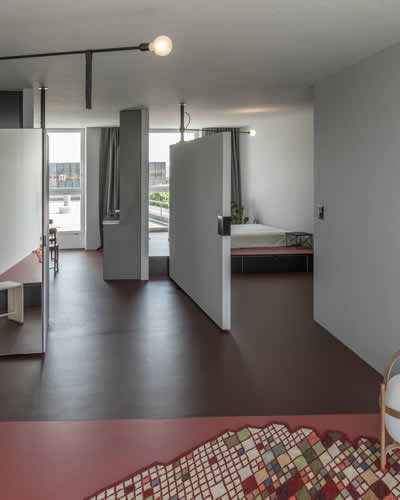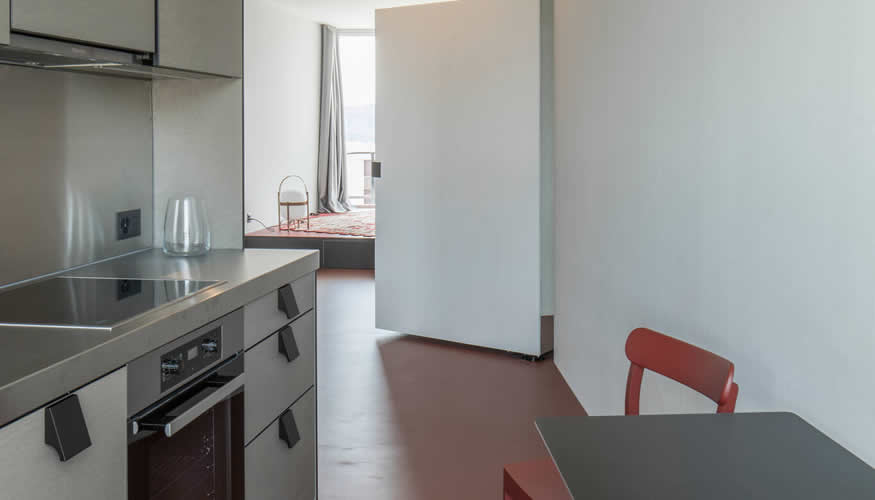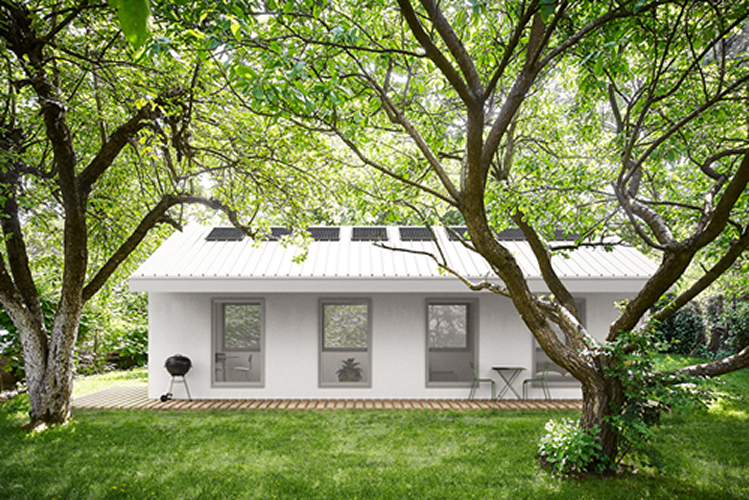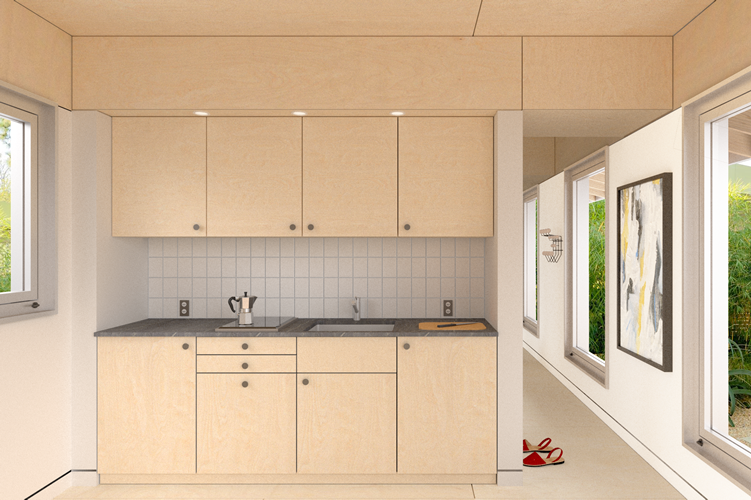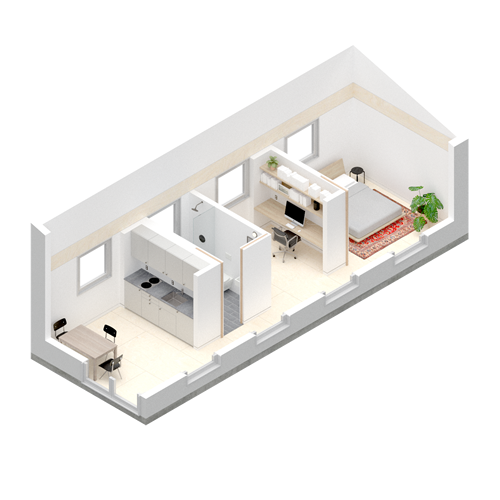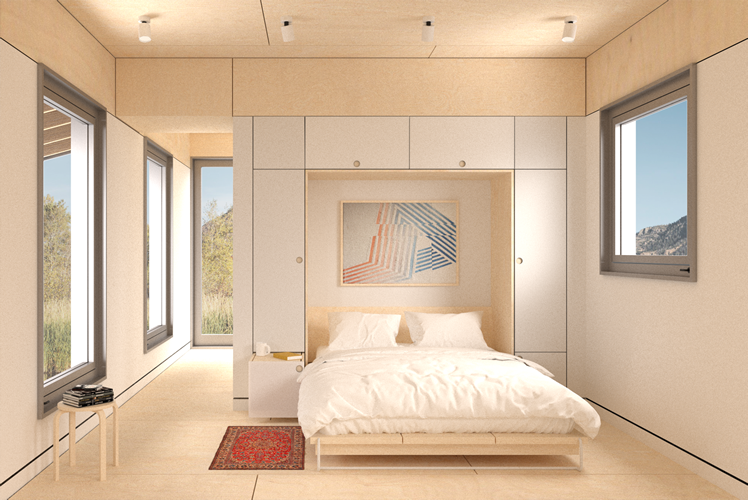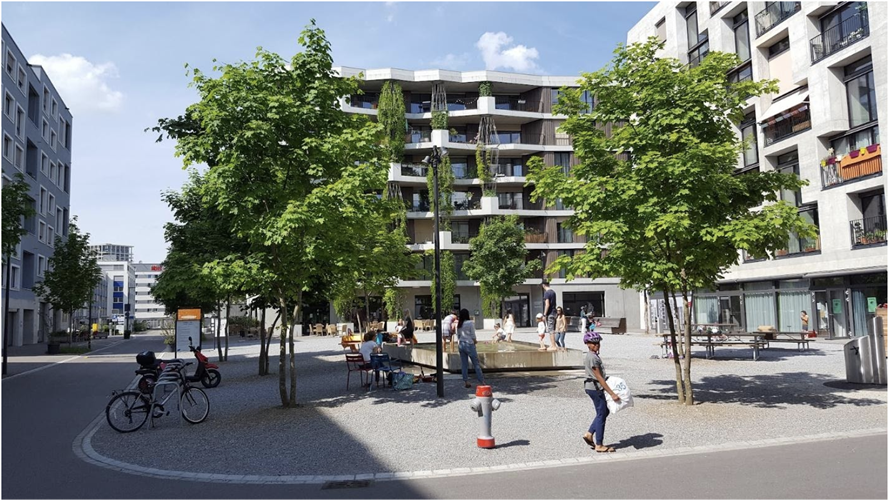Introduction: Dorit Fromm
 |
Fondazione Housing Sociale:
The Housing Foundation developed a class to help future residents form a collaborative community in their housing development.
|
In the face of global catastrophes, inequities, divisions and isolation, take this year’s question as an invitation towards more collaborative and experimental living. Housing that improves residents’ day to day life. Housing that encourages residents to take an active role in saving resources and creating community. Housing that connects households to each other and the larger neighborhood: visually, casually, through space and over time. All require willing residents as well as good design.
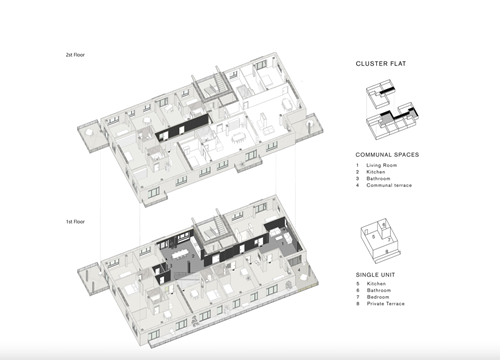 |
Spreefeld Housing Cooperative in Berlin, with a mix of non-traditional and traditional units (six clustered units, housing from 4 to 21 residents, and 58 independent units)..
|
What if the social connections of the residents came first before architectural program and built form? Households that share ideas and hopes of how they imagine their day-to-day life together, and make some agreements on their intentions, are more likely to follow through once moved in.
The Fondazione Housing Sociale, in Italy, has a course for would-be residents to decide together on the design and use of a common space in their about-to-be-built housing projects. For the first year, a part-time facilitator helps residents in coordinating activities in the space.
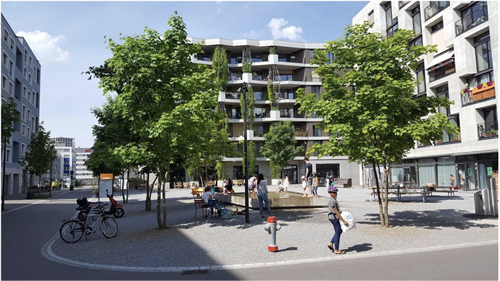 |
Mehr als Wohnen, Switzerland: A plaza allows neighbors to mingle and is open to the larger neighborhood.
|
In designing the Swiss “Mehr als Wohnen” (More Than Housing) cooperative, a group of nonprofits listened to potential residents about their needs. The development team included professionals versed in facilitating and interpreting user preferences, resulting in a wide mix of affordable and innovative housing types, participation of residents in their housing community, and neighborhood-shared amenities.
 |
Mehr als Wohnen, Switzerland: Childcare and afterschool care are located on the ground floor level of the housing, as well as a café and other neighborhood services.
|
A group of people can self-organize, pool their resources, then decide on their development team. Site layouts can encourage social interactions: pedestrian-oriented, with private units that have a view and orientation to the commons. Resident connections and ample common facilities encourage task-sharing.
Tell us about resident choice, flexibility of space, need for household privacy, management participation and ways to solve conflicts—these help to form a strong housing community. How will your success be measured in this social art? Evaluations, over time, of the housing and resident satisfaction inform future efforts, demonstrating where words and ideas have separated from reality.
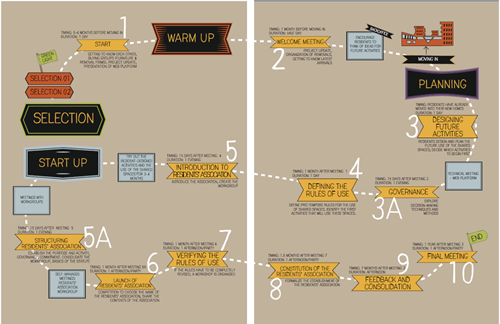 |
Fondazione Housing Sociale: The Housing Foundation developed a class to help future residents form a collaborative community in their housing development. From the manual “Starting Up Communities, A Design Kit for Collaborative Housing,” (Fondazione Housing Sociale).
|
In short, your task is to be a resident-connecting designer and a writer about that design. What if your reader’s connection to your writing came first?
|
|
|
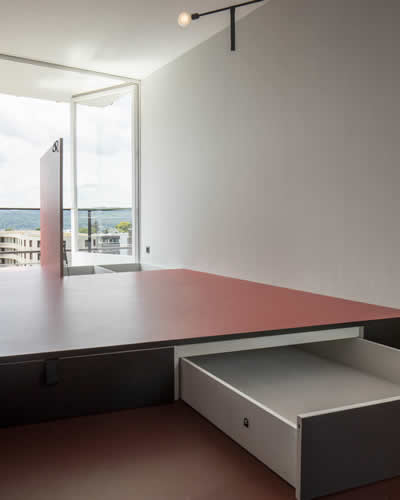 Elli Mosayebi, Edelaar Mosayebi Inderbitzin Architects (BP2022 Juror): vacancy – no vacancy project. "The two built-in platforms contain numerous storage compartments for personal belongings." (See Essay Question: Introductions by jurors.)
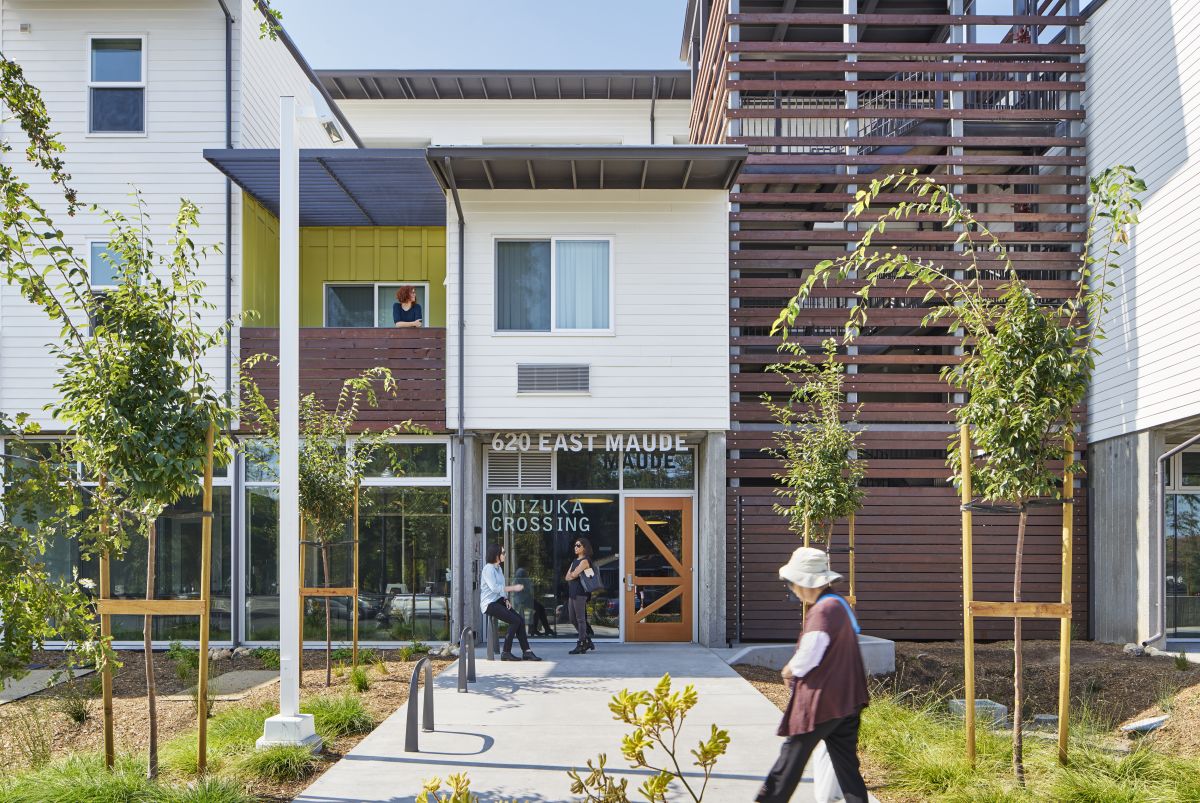 Onizuka Crossing Housing, David Baker Architects, San Francisco, 2016. The result of a partnership between MidPen Housing and the City of Sunnyvale, California, U.S.A., Onizuka Crossing provides 58 low-income working families with new, affordable rental homes in Sunnyvale, the heart of the Silicon Valley. Twenty-nine units are reserved for formerly homeless individuals and their families. (See: https://www.dbarchitect.com/project_detail/178/Onizuka%20Crossing%20Family%20Housing.html) Photo credit: ©Bruce Damonte.from DBArchitect.com.
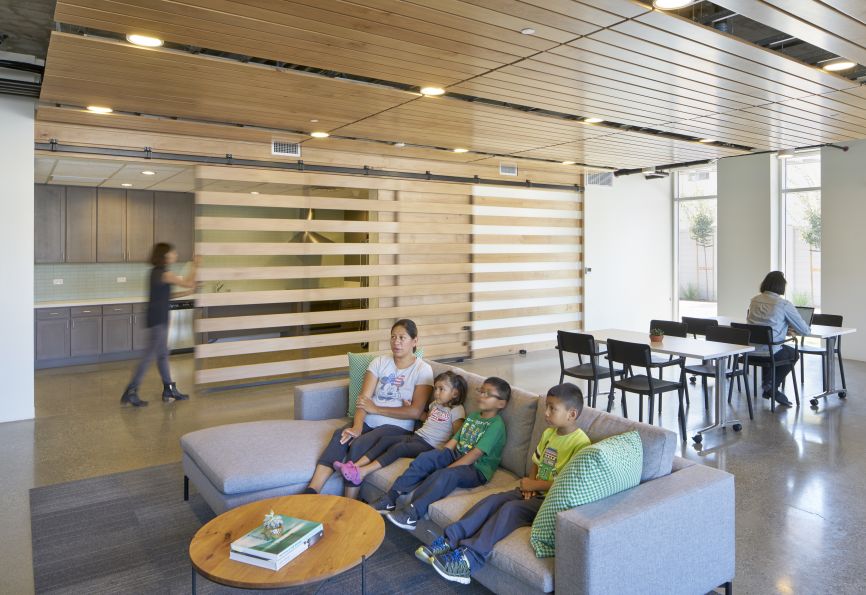 Onizuka Crossing Housing, David Baker Architects, 2016. "Former homeless residents receive extensive supportive services in collaboration with the Santa Clara County Department of Behavioral Health and the U.S. Veterans Administration Palo Alto Healthcare System... Onizuka Crossing is a prime example of infill development, transforming a U.S. National Guard armory building into supportive, permanent affordable housing." (See: https://www.dbarchitect.com/project_detail/178/Onizuka%20Crossing%20Family%20Housing.html) Photo credit: ©Bruce Damonte from DBArchitect.com.
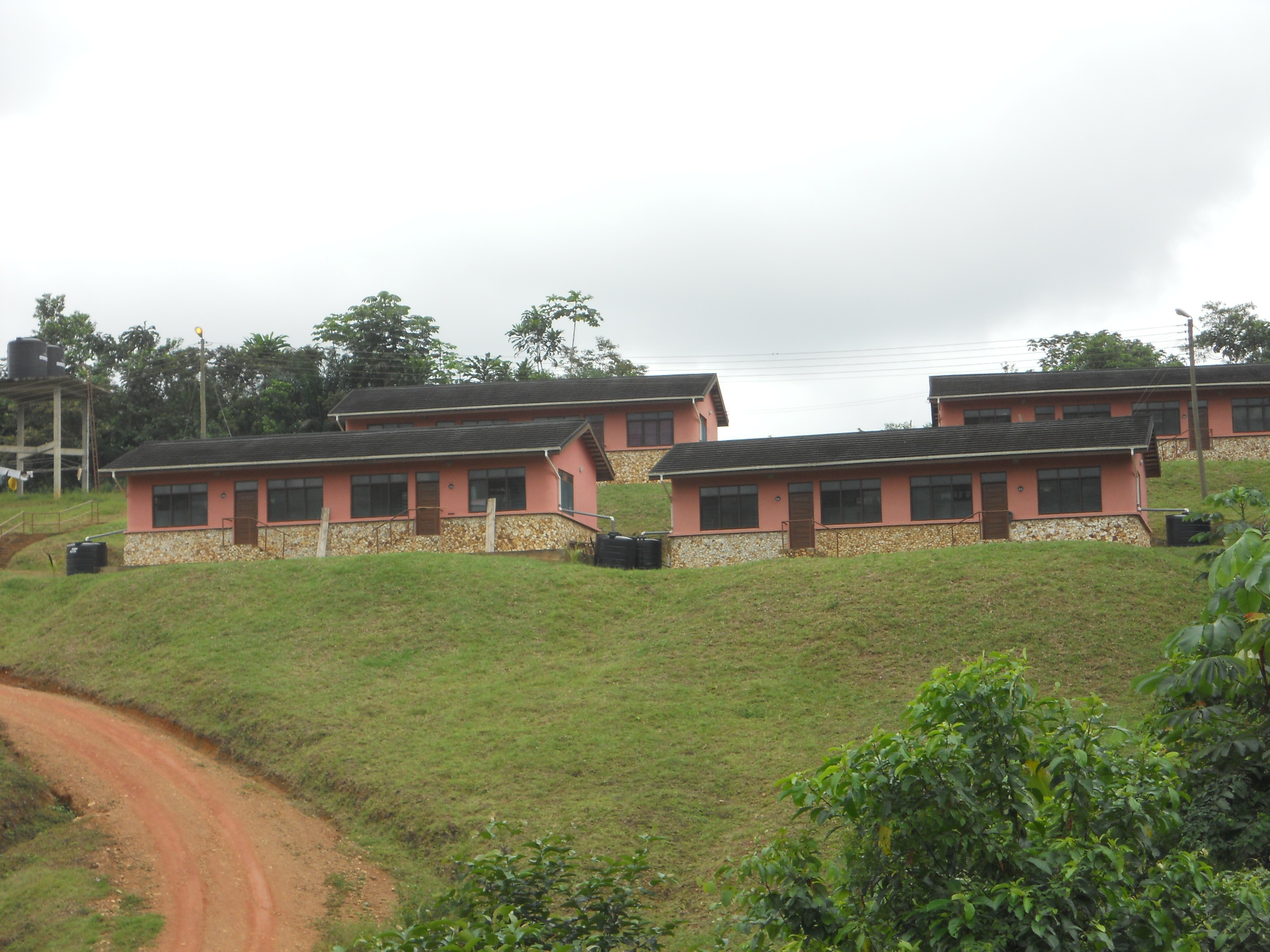 S. Tetteh + Associates Architects, Accra, Ghana. Low-cost housing project for rangers and conservation staff at the Bia and Ankasa Reserves, Juabeso-Bia district, southwest Ghana.
 S. Tetteh + Associates Architects, Accra, Ghana. Low-cost housing project for rangers and conservation staff at the Bia and Ankasa Reserves, Juabeso-Bia district, southwest Ghana.  Fondazione Housing Sociale, Milan, Italy: The Housing Foundation developed a class to help future residents form a collaborative community in their housing development. Research by Dorit Fromm, Writer, Architect, BP2022 Juror: (See Essay Question: Introductions by jurors.)
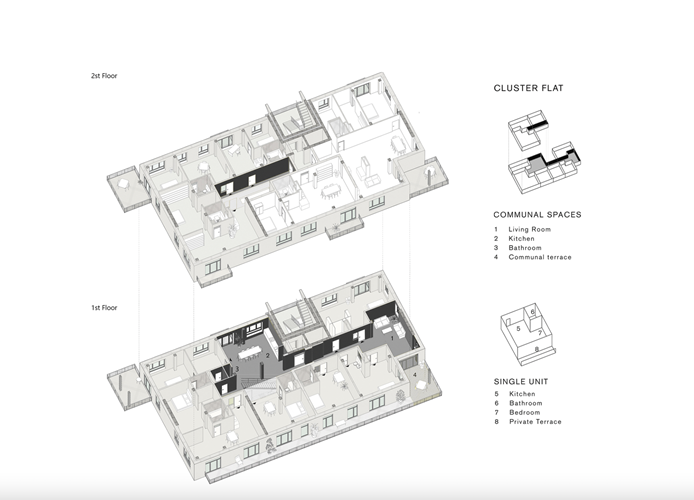 From the manual "Starting Up Communities, A Design Kit for Collaborative Housing," Fondazione Housing Sociale, Milan, Italy. Research by Dorit Fromm, Author, Architect, BP2022 Juror: (See Essay Question: Introductions by jurors.)
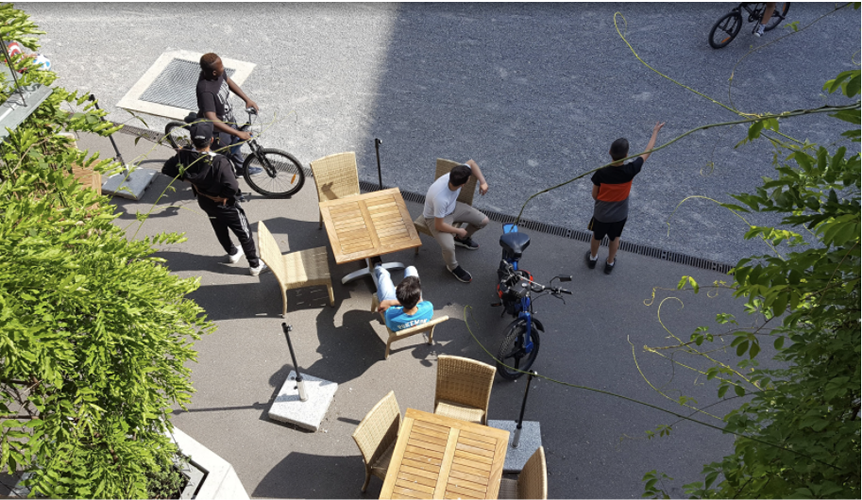 Mehr als Wohnen, Switzerland: Childcare and afterschool care are located on the ground floor level of the housing, as well as a café and other neighborhood services. Research by Dorit Fromm, Author, Architect, BP2022 Juror: (See Essay Question: Introductions by jurors.)
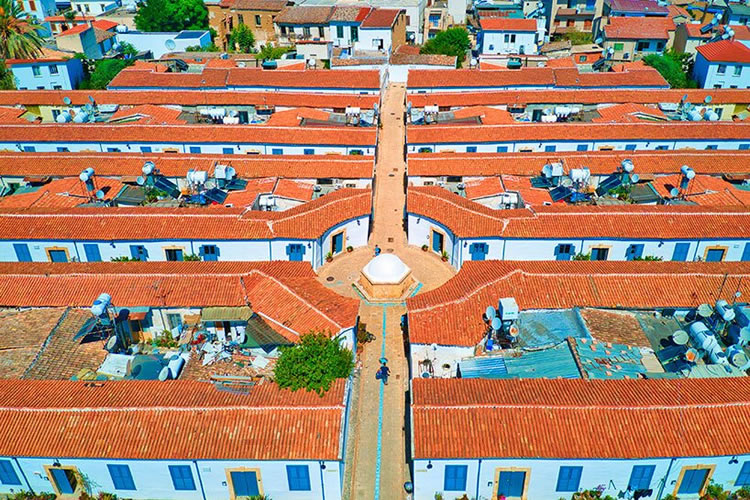 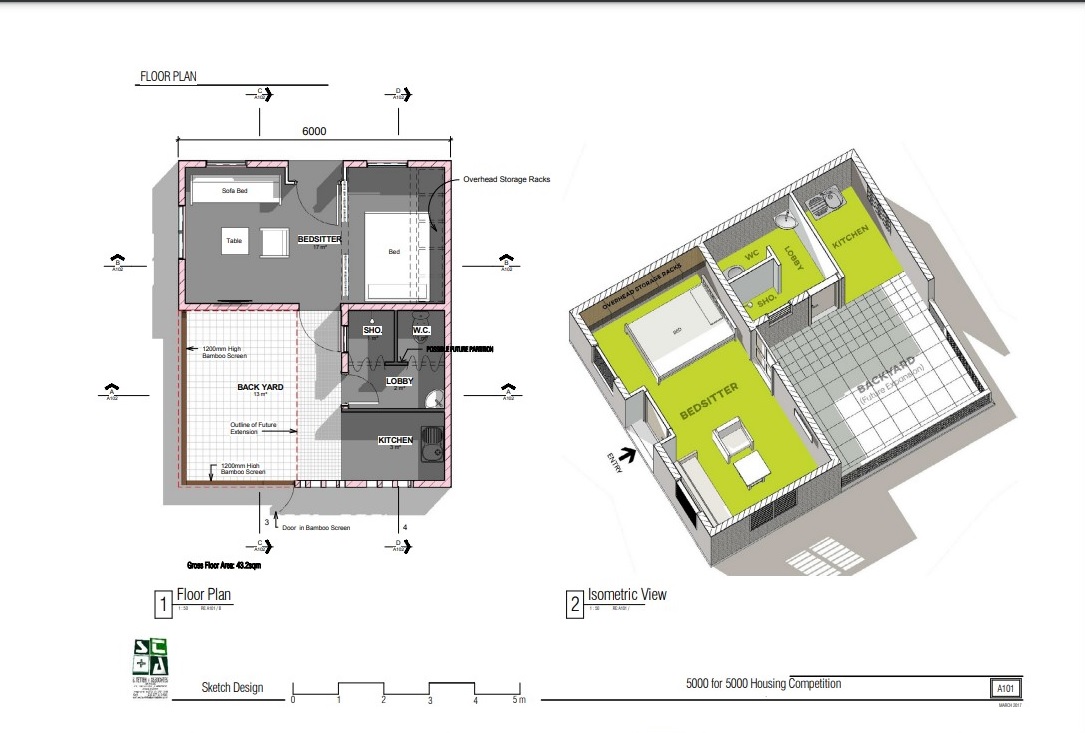 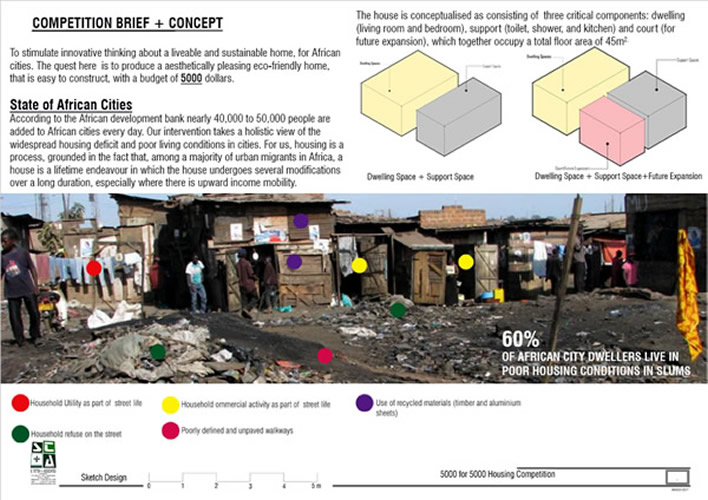 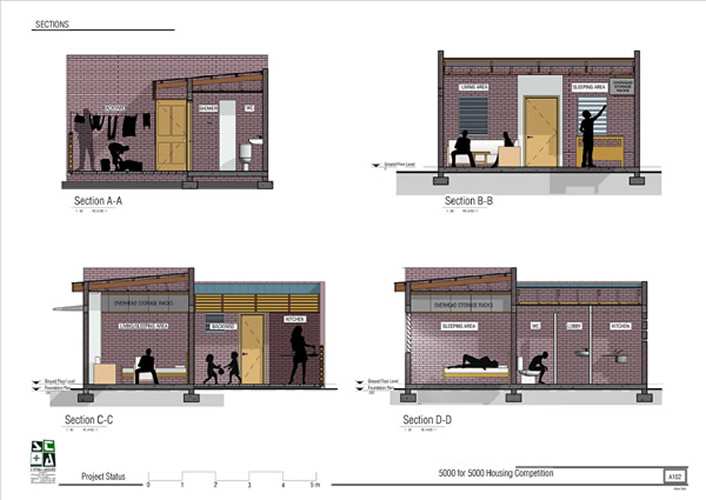 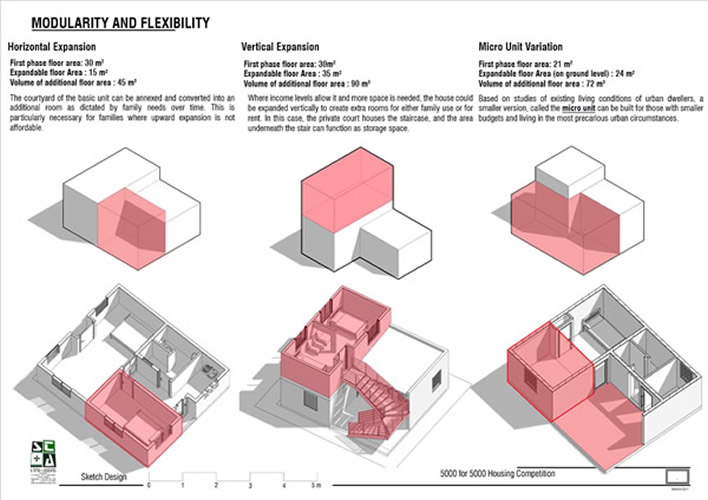 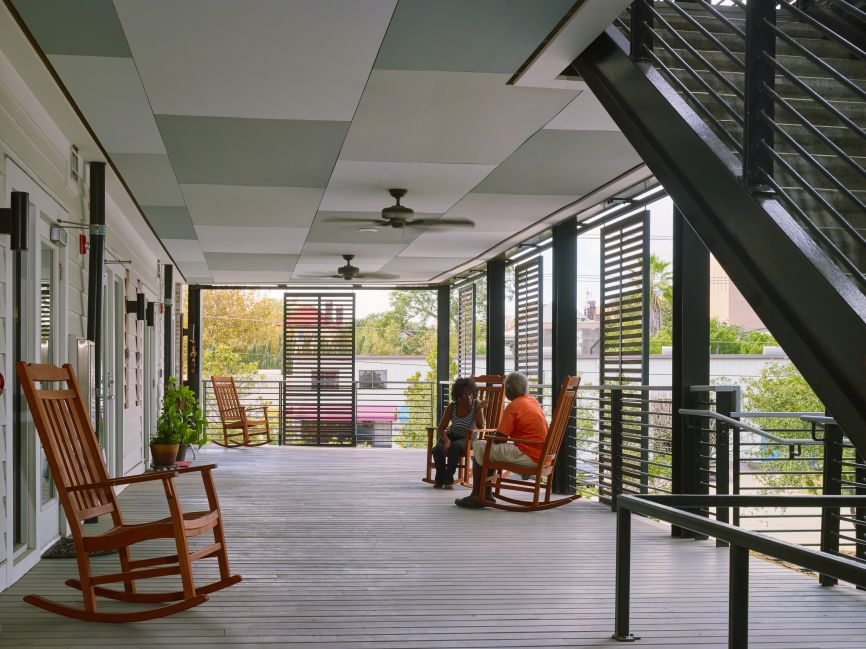 Williams Terrace, Charleston, South Carolina, U.S.A., Architect of Record, McMillan Pazdan Smith Architecture, Spartanburg, South Carolina, U.S.A. /Design Architect, David Baker Architect, San Francisco, California, U.S.A., 2017. "Williams Terrace won the 2019 American Institute of Architects/Housing and Urban Development Secretary's Housing and Community Design Award for Excellence in Affordable Housing Design. This singular nation-wide award recognizes architecture that demonstrates overall excellence in terms of design in response to both the needs and constraints of affordable housing... Wide porches that double as circulation offer places to sit, meet in passing, and personalize a bit of outdoor space." (See: https://www.dbarchitect.com/project_detail/176/Williams%20Terrace%20.html) Photo credit: Chris Luker from DBArchitect.com.
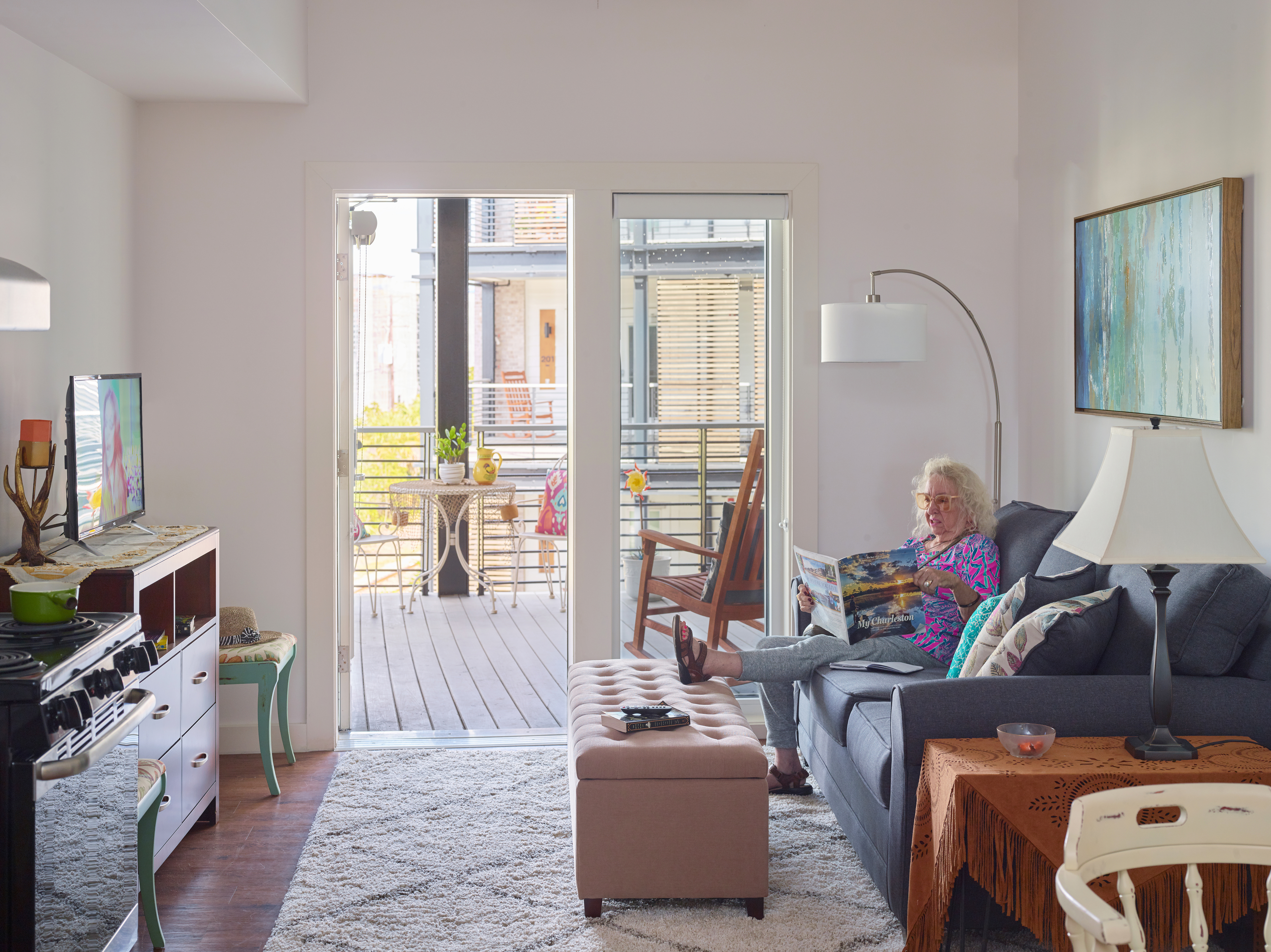 Williams Terrace, Charleston, South Carolina, U.S.A., Architect of Record, McMillan Pazdan Smith Architecture, Spartanburg, South Carolina, U.S.A. /Design Architect, David Baker Architect, San Francisco, California, U.S.A., 2017. "The design team worked closely with the Housing Authority of the City of Charleston to create a dynamic building that meets the challenges of the site—located in a high-velocity flood zone—and respects the gracious built fabric of downtown historic Charleston... Apartments connect to the wide circulation porches, which have room for some personal touches." (See: https://www.dbarchitect.com/project_detail/176/Williams%20Terrace%20.html) Photo credit: Chris Luker from DBArchitect.com.
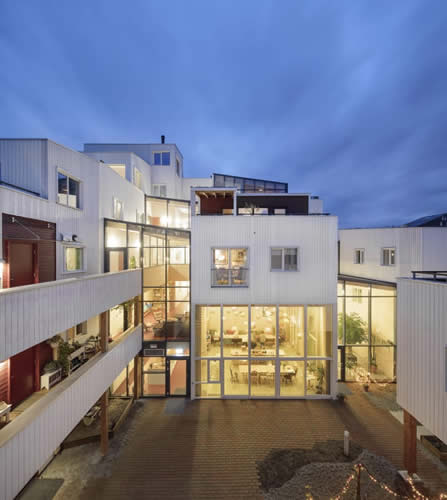 Vindmøllebakken, 40-unit cohousing project, Stavanger, Norway, 2019. Designed by founding architects Siv Helene Stangeland and Reinhard Kropf of Norwegian firm Helen & Hard. The architects now live in Vindmøllebakken. Photo credit: Minna Soujoki Langbord/Courtesy of Helen & Hard via Editon.CNN.com
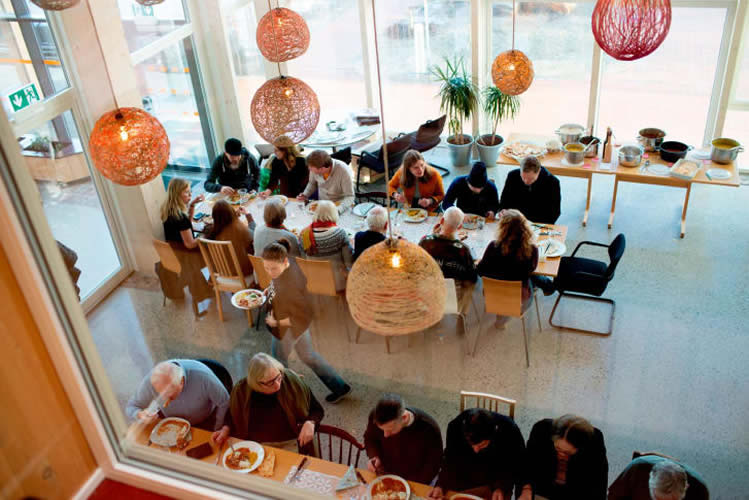 Vindmøllebakken, 40-unit cohousing project, Stavanger, Norway, 2019. In addition to Vindmøllebakken (see previous slide), Helen & Hard are reported to having five other cohousing projects in the works. Photo credit: Sindre Ellingsen/Courtesy of Helen & Hard via Edition.CNN.com
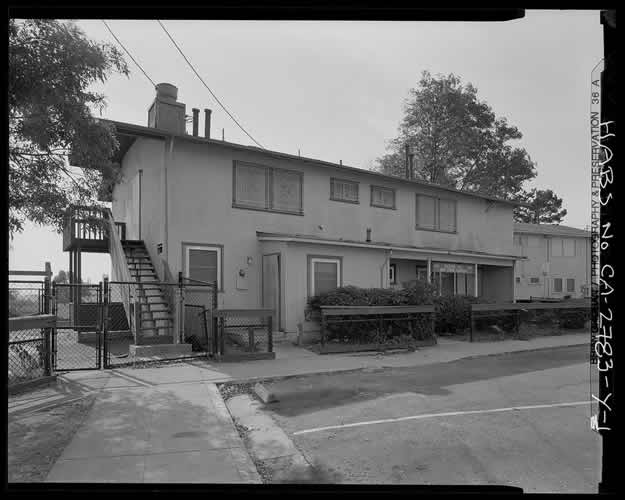 Easter Hill Village, Richmond, U.S.A., 1954. Demolished, 2004. "It was the most significant public effort to provide affordable permanent housing for many families displaced by demolition of temporary World War II housing. It was the first multi-unit residential development to combine the twin themes of the planned unit development with the individuation of units... and the care given to integrating a multi-unit residential development to its site." Historic American Buildings Survey, Library of Congress, U.S.A. (See: https://www.loc.gov/item/ca3350/)
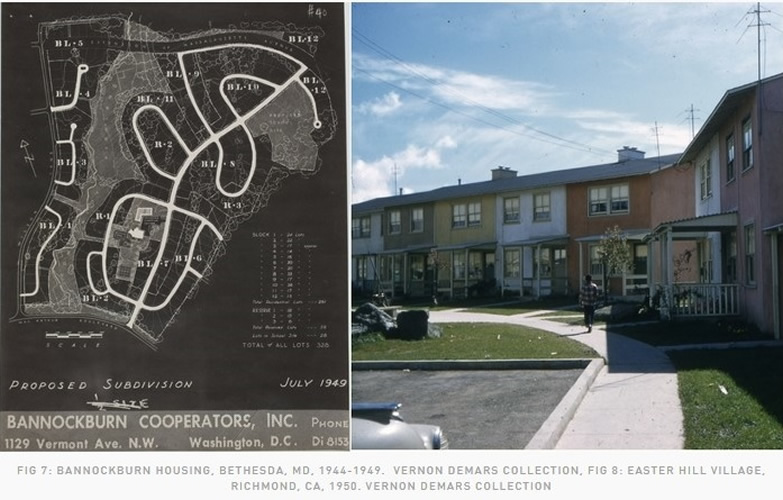 Richmond Village (formerly Easter Hill Village - see previous slide), California, U.S.A., 2008. "The goal for the …Richmond Village project was to turn 300 units of crime-ridden, run-down public housing into a vital neighborhood anchored by a community center and public open space. The development was originally built in 1954 and was a model of public housing until neglect, crime and poverty took over. The Richmond Housing Authority together with Richmond Village…residents collaborated to re-construct a vision of community. The vision included open/community space with mixed-income housing; 100% of the rental housing is affordable, with 70% allocated for public housing residents. The for-sale family homes have a mix of low, moderate and market-rate housing." (See: https://www.nibbi.com/projects/richmond-village/)
|
|






